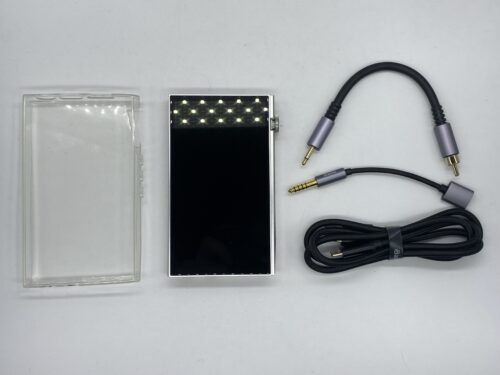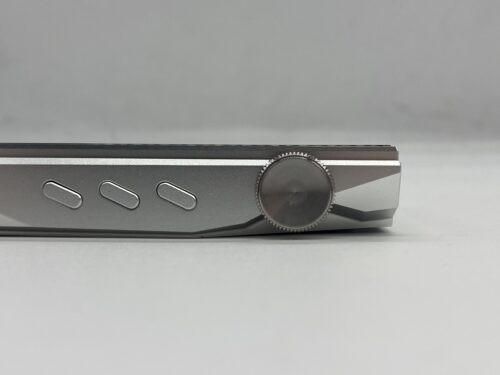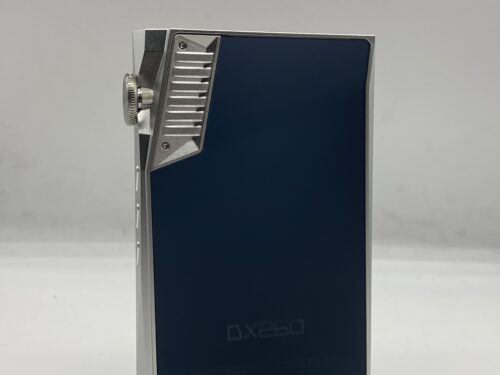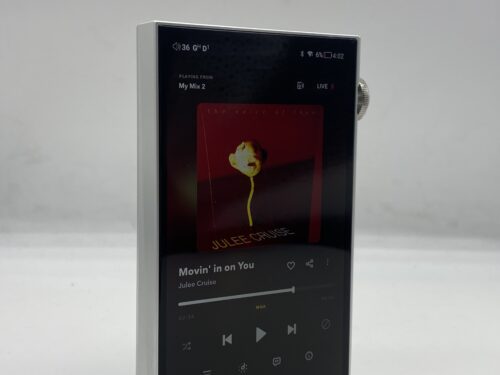There’s a new digital audio player from iBasso, and like the rest of them, I’m excited to te it out. This isn’t one of their flagship players like the DX320, but it’s an option for those who want to spend just under a thousand dollars on a DAP. As part of their DX product line, iBasso looks to pack a ton of tech into this player, despite being less than their flagship model. Let’s see how the DX260 compares to other DAPs in its range.
What You Get
- DX260 Player
- USB-C cable
- Coaxial cable
- TPU case
- Screen protector
- Warranty card
- Quick start guide
Build
Usually, iBasso players have a very smooth surface and are comfortable to hold in your hand. The DX260 is a bit of a departure from that design, resembling more of the hard edges and angular aesthetic of Astell & Kern DAPs. It’s more industrial than the slick, rounded construction of their other players, but I respect that iBasso went for something a bit different. Without a case, holding the device in your hand is a bit rough, but thankfully the DX260 comes with a case. Everything about the build quality is as high-grade as you’d expect, supported by a hard aluminum chassis that has more indentations that separate it from past models. The volume dial is the most like past iBasso players, and it’s implemented on the device naturally.
For your headphone connectors, you have a 3.5mm and 4.4mm balanced output. On the top of the device, you can find inputs for USB-C, S/PDIF, and a microSD slot.
Design
Under the hood, the DX260 sports a DAC chipset that features a flagship Cirrus Logic put through a special OCTA DAC chip matrix that aims to further shape the sound and achieve the highest standard possible. Powering the operating system is a Snapdragon 660 with 4GB of RAM and 64 GB of ROM. In practice, the DX260’s Android II OS is as snappy as ever. Navigating its menus and applications feels familiar, as you interact with its smooth interface smoothly. You can use the pull-down menu to access most of the device’s important sound features, like gain mode and FIR mode. The latter allows you to make the most of the DX260’s multiple DAC chips, improving the integrity of the original signal. It all feels elegant, and seamlessly implemented with the devices OS.
Battery Life
Depending on your settings, the DX260 can last you around fourteen hours. Using certain gain modes and listening to certain format methods will drain the battery a bit quicker than you might be expecting.
Sound Impressions
Players from iBasso contain some of my favorite sound reproduction for these devices. Past players like the DX320 and DX170 have brought natural output containing sharper precision and unveiled detail retrieval. They are known for their neutral timbre, but the sound profile never comes across as cold or clinical. This is all true for the DX260, which preserves a ton of texture on top of its reference-level response. It’s an effortless portrayal of sound that never struggles to maintain musicality. Everything I paired up with the DX260 kept reminding me what made this selection of headphones and IEMs fun to listen to. Some of those headphones and IEMs I tested were the Audeze LCD-X, MM-100, Arya Organic, and Campfire Audio Supermoon.
Listening to the LCD X with the DX260 I mostly knew what to expect. The sound was highly balanced and accurate, with snappy notes and dynamic bass showcasing great depth. I’ve heard the LCD X and its frequency response stacked like this on other players, but rarely so smoothly. I think it’s the impeccable imaging that conveys so much exactness and separation that significantly opens up the headphones’ soundstage. You get a similar response with the MM-100, maintaining accuracy but minimizing the headspace and wrap-around a bit.
HiFiMAN headphones seemed to pair very well with the DX260, although I wouldn’t run the Susvara off of it. I settled for the Arya Organic, which brought some fantastic textures and refined details in the upper-mids and highs. The DX260 organizes some of the floatier elements of the Arya Organic and presents them more directly. You still get the airiness of the treble, but the specific instruments come across as more individualized. I tried the Ananda Nano with the DX260 for a short time as well, and the results were just as revealing and enjoyable.
The Campfire Audio Supermoon was the only IEM I was able to spend some significant time with paired with the DX260. One of the only differences that stood out to me was how the vocals were presented. There was more dominance and transparency here compared to everything else I tested. I got an underlining crispness and more attack on certain treble elements that gave everything a bit more edge.
Summary
Everything about the DX260 is presented effortlessly. The design change might take some getting used to, but it still offers an impressively constructed player that checks all the boxes for a high-end DAP. The fact that the DX260 steers to the edge of being a thousand dollars gives it tons of value too, and it might be the best you can get for that price.

The iBasso DX260 is available at Audio46.
Compare the ranking of various headphones, earbuds and in-ear monitors using our tools.
Discuss this, and much more, over on our forum.
---MAJORHIFI may receive commissions from retail offers.


















